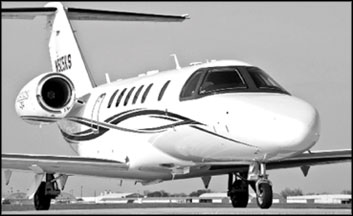|
Thorns on the Side
From Puss Moths to Dreamliners
 Seventy-seven years ago, Sri Lanka (then known as Ceylon) entered a
new era of air connectivity with the rest of the world. On November 27,
1935 a De Havilland Puss Moth flown by Tyndalle Bisco, Chief flying
instructor of the Madras Flying Club, was the first aircraft to land at
the new Ratmalana airport, just a few kilometres away from Colombo City. Seventy-seven years ago, Sri Lanka (then known as Ceylon) entered a
new era of air connectivity with the rest of the world. On November 27,
1935 a De Havilland Puss Moth flown by Tyndalle Bisco, Chief flying
instructor of the Madras Flying Club, was the first aircraft to land at
the new Ratmalana airport, just a few kilometres away from Colombo City.
This marked a new beginning for the country, which became closer to
the rest of the world. Ratmalana, now primarily a domestic airport, at
one time had the country's main international air terminal, with the
Douglas DC-3 Dakota and Lockheed Constellation planes of Air Ceylon
flying in and out, along with planes from KLM (Douglas DC-4 Skymasters),
BOAC (Canadair Argonauts) and several other airlines.
This is a far cry from today’s ultra-modern Airbus A380s and Boeing
Dreamliners, but what matters is that Ratmalana (IATA code RML) put Sri
Lanka on the world aviation map. Ratmalana could again be used as an
ideal City Airport (like the London City Airport, which is just six Km
away from central London) for smaller international aircraft used on
scheduled or charter flights.
There are many advantages, the main one being proximity - Ratmalana
is much closer to Colombo than the Bandaranaike International Airport.
It is commendable that the aviation authorities are developing this
airport rapidly up to international standards.
In fact, the development of domestic airports is essential for a
country gearing for a boom in tourism. There are many countries much
smaller than Sri Lanka which have more vibrant domestic airline
industries. Ten main domestic airports including Jaffna, Anuradhapura,
Ampara, Hingurakgoda and Batticaloa and smaller landing strips are being
developed with this aim in mind.
New airports will be constructed at places in Kandy and Puttalam. We
hope that they are also being upgraded with the latest safety and
communications systems including advanced firefighting systems.
Many high spending and savvy tourists do not want to spend days on
the road (though these are becoming better and faster, with the entry of
expressways) and they want to reach their destinations in less than one
hour. The country’s small size makes it possible - whether by seaplane
(air taxi), helicopter or aircraft, no destination is really far away.
It is indeed possible to bask in the sun at the pristine beaches of
Trincomalee just an hour after landing in Colombo.
Operations
Domestic operators should also look at purchasing or leasing the
latest models of business jets and turboprops which are more suitable
for internal operations here. Despite global economic volatility, the
worldwide business jet/small jet market is booming and manufacturers are
keen to spread their wings further with attractive deals for operators
including extended free warranties. They are also safer, with the latest
avionics suites and communications systems.
 With several State and private operators in the fray and more
aircraft coming in, there is intense competition and ticket prices on
some sectors are really affordable. There is a distinct possibility that
the country’s two international airlines will expand domestic operations
as well (SriLankan already has the Air Taxi service). With several State and private operators in the fray and more
aircraft coming in, there is intense competition and ticket prices on
some sectors are really affordable. There is a distinct possibility that
the country’s two international airlines will expand domestic operations
as well (SriLankan already has the Air Taxi service).
But wider publicity must be given to the availability of these
flights overseas, because many travellers do not know much about this
option.
The Colombo-Jaffna route is very well known, but the availability of
flights to upmarket destinations such as Nuwara Eliya (by air taxi) is
not so well known.
This lacuna must be addressed by our tourism and aviation
authorities, apart from inbound (private sector) travel operators.
One idea that they should explore is the possibility of introducing
an ‘Air Pass’, a type of season ticket that can be purchased overseas,
perhaps along with the international flight to and from Sri Lanka or
even separately from a dedicated secure website.
For example, if you are visiting Australia, it is possible to buy an
Air Pass to visit a minimum of three cities for around A$ 207 (Rs
28,000). Under such a package, a tourist will be able to hop on and off
at several domestic destinations at a more affordable rate. The airlines
will also gain better returns as ticket volumes soar.
Popular
In most countries, international travel from regional domestic
airports (using smaller aircraft) has become popular. One such example
is a flight to Chennai from Jaffna, but airlines will assess whether
there is such a market as they expand operations. Low cost or second
airlines of various countries are also looking at City Airports to
expand overseas operations, which could be another opportunity for our
domestic airports once they are elevated to international standards.
It is also essential to have fully-fledged domestic terminals at the
two main international airports - BIA and Mattala, which will be
operational from next year.
In other words, they can also function as domestic airports and take
passengers even more swiftly to their intended destinations. Some
passengers who alight from one airport and have to take a connecting
flight from the other airport could also be offered a faster alternative
to road travel, by having regular flights between the two airports, even
though the Southern Expressway-BIA Airport Expressway link would be fast
enough for most travellers.
Ratmalana too can be included in this travellers’ loop. Ground
transport does play an important role in revitalising our domestic
airport structure. Once more domestic flights take off and land all over
the island, passengers should have better ground transport options
including comfortable taxis (not three wheelers) to whisk them off to
their hotels or other venues. The train service, if available at cities
served by domestic airlines, must also cater to these travellers. In the
long run, bus and train timetables could be synchronised with the
arrival and take off times of regular domestic flights.
A vibrant domestic aviation industry is vital for a developing
country, especially one that is emerging from three decades of terrorism
that inhibited growth and aiming to increase tourist arrivals
exponentially.
The development of domestic airports throughout the country is thus a
step in the right direction.
|



